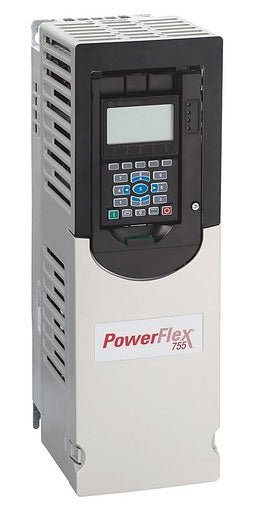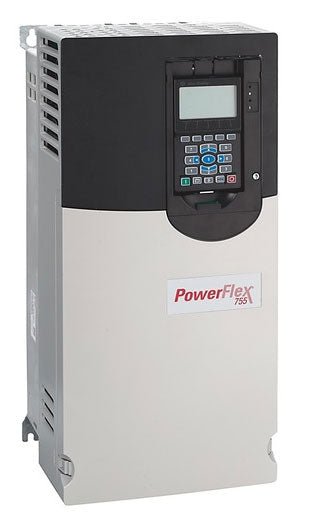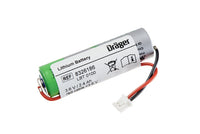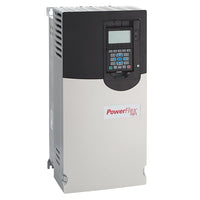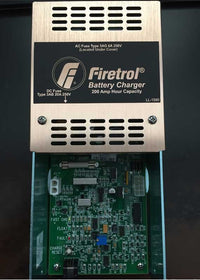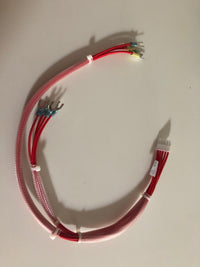The Programmable Ethernet module by Allen-Bradley (the 1785-L80E-F) PLC-5/80-E features a user memory of 48-kilowords, a battery-backed static RAM, an EEPROM backup, a 3072 complementary I/O number and 2048 analog I/O number. This unit has a scanning time per rack of 10 milliseconds at 57.6 kbit/s, 7 milliseconds at 115.2 kbit/s, and 3 milliseconds at 230.4 Mbits/s. It has 64 universal remote I/O chassis, one port that is compatible with either RS-232-C or 422-A/423-A, and a control coprocessor expansion port.
This module’s battery lifespan comprises 1 year at 25 degrees Celsius in 100% power off setting and 1.2 years in 50% power off setting. At 60 degrees Celsius, the operation lasts 84 to 150 days. The unit’s user memory can be increased to 16, 32, 48, and 100 k words using the 1785-L20E, 1785-ME32, 1785-L40E, and 1785-L80E modules. The maximum clock deviation at 20 degrees Celsius is 20 seconds, and at 60 degrees Celsius is near 5 minutes per month. The lower working temperature of this unit is 0 degrees Celsius.
The relative humidity of this unit is 5 to 95 % (non condensing). Its operating vibration limits are 10 to 500 Hertz, with an operating shock value of 30 g, and a nonoperating shock value of 50 g. The 1785-L80E-F controller has a maximum of 6 kV discharge immunity (ESD protection), an RF immunity of 10 V/m/1 V/m for AM sine-waves of 80% from 30 to 2000 and 2000 to 2700 MHz respectively. This unit’s static value of 10 V/m against a 200 Hertz AM pulse from 900 and 1890 MHz radiation, EFT/B immunity on c-ports at 5 kHz near 2 kV.
The 1785-L80E-F module has a power consumption around 3.6 A at 5 Volts DC with dissipation in a maximum range of 18.9 Watts. It has a compatible Ethernet wiring of 802.3 shielded or unshielded twisted pair, and the ability to connect remote I/Os with a 1770-CD cable type. The battery type is 1770-XYC.
The controller is located at 1771-A1B, -A2B, -A3B, -A3B1, -A4B chassis (leftmost slot). It is possible to address hardware through 2-slot and 1-slot modes.
The Programmable Ethernet module by Allen-Bradley (the 1785-L80E-F) PLC-5/80-E features a user memory of 48-kilowords, a battery-backed static RAM, an EEPROM backup, a 3072 complementary I/O number and 2048 analog I/O number. This unit has a scanning time per rack of 10 milliseconds at 57.6 kbit/s, 7 milliseconds at 115.2 kbit/s, and 3 milliseconds at 230.4 Mbits/s. It has 64 universal remote I/O chassis, one port that is compatible with either RS-232-C or 422-A/423-A, and a control coprocessor expansion port.
This module’s battery lifespan comprises 1 year at 25 degrees Celsius in 100% power off setting and 1.2 years in 50% power off setting. At 60 degrees Celsius, the operation lasts 84 to 150 days. The unit’s user memory can be increased to 16, 32, 48, and 100 k words using the 1785-L20E, 1785-ME32, 1785-L40E, and 1785-L80E modules. The maximum clock deviation at 20 degrees Celsius is 20 seconds, and at 60 degrees Celsius is near 5 minutes per month. The lower working temperature of this unit is 0 degrees Celsius.
The relative humidity of this unit is 5 to 95 % (non condensing). Its operating vibration limits are 10 to 500 Hertz, with an operating shock value of 30 g, and a nonoperating shock value of 50 g. The 1785-L80E-F controller has a maximum of 6 kV discharge immunity (ESD protection), an RF immunity of 10 V/m/1 V/m for AM sine-waves of 80% from 30 to 2000 and 2000 to 2700 MHz respectively. This unit’s static value of 10 V/m against a 200 Hertz AM pulse from 900 and 1890 MHz radiation, EFT/B immunity on c-ports at 5 kHz near 2 kV.
The 1785-L80E-F module has a power consumption around 3.6 A at 5 Volts DC with dissipation in a maximum range of 18.9 Watts. It has a compatible Ethernet wiring of 802.3 shielded or unshielded twisted pair, and the ability to connect remote I/Os with a 1770-CD cable type. The battery type is 1770-XYC.
The controller is located at 1771-A1B, -A2B, -A3B, -A3B1, -A4B chassis (leftmost slot). It is possible to address hardware through 2-slot and 1-slot modes.





